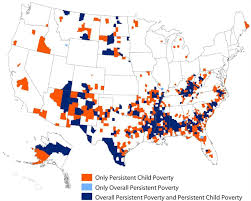
"You can't build a house without a hammer and saw, and you
can't expect an adult to build a successful life if the tools of
learning and health weren't instilled in childhood," says Joan Benso of
Pennsylvania Partnerships for Children. Her organization's recent report
about the state's nearly 500,000 rural children suggests that many are
dealing with challenges as difficult as those of kids in urban areas. Included: Highlights from a report that surprised even its creators!
"The conventional view of a child in poverty is a child of color,
sitting on the stoop of a rundown row house. With the facts presented
in this report, the picture now includes a child in a rural setting,
facing the same obstacles to learning, health, and general well-being
that the urban child in poverty faces."
-- Joan Benso
Pennsylvania Partnerships for Children
|
|
Lawmakers and citizens often think that urban children need the most
attention when it comes to issues of health and education. But in
Pennsylvania, officials of the Pennsylvania Partnerships for Children (PPC) hope to change that perception. They recently released a report, Miles to Go: The Well-Being of Pennsylvania's Rural Children, which found that life for rural children can be every bit as challenging as for urban children.
"We began this effort with a goal of myth-busting -- showing
Pennsylvania lawmakers and citizens that there are children in need
where people would least expect," said Joan Benso of PPC.
Although the report was designed to surprise lawmakers and the public,
it also startled its creators. "Frankly, we encountered a few surprises
ourselves," Benso told Education World. "The biggest surprise was the
finding that the rate of rural childhood poverty actually exceeds [that
of] urban childhood poverty -- that was a shocker."
Miles to Go: The Findings
The following are among the findings published in Miles to Go:
* More rural children (18 percent) than urban children (15.5 percent) live in poverty.
* A single parent heads 24 percent of all rural families.
* One in 12 rural children is born to a mother under 20.
* One rural child in six is born to a mother who has less than a high school education.
* Though fewer rural high school students drop out of school than the
state average, only 18 percent of these dropouts plan to get a GED.
* One rural infant in five is born to a mother who used tobacco during pregnancy.
* There is one primary care doctor for every 358 rural children.
* There is one pediatrician for every 3,636 rural children.
* There is one dentist for every 584 rural children.
|
|
OVERCOMING INERTIA

Dr. P. Duff Rearick, superintendent of the http://www.greencastle.k12.pa.us/
">Greencastle-Antrim School District in south-central Pennsylvania,
would not be shocked by this finding from PPC. His district would
benefit fiscally if its citizens could be persuaded to sign up for
public assistance. They often refuse to declare their poverty status,
and Rearick believes the main causes are pride and a distrust of
government that is prevalent in the rural district.
"In this rural community, people value education -- to a point,"
explained Rearick. "They value a high school diploma but not education
after high school. Only 11 percent of our residents have college
degrees, and in 1995 we sent only 39 percent of our kids on to education
after high school. With a lot of work we have raised that number to 67
percent in six years.
"A major hurdle for a rural district is overcoming the inertia present
in a community," Rearick continued. "'Life here is good, I do not mind
being poor, indeed I like the values, and my kids are going to do the
same thing -- this is a frequent direct and subtle message sent to
children."
A unique benefit of the school's rural location, Rearick reports, is
that the active church life of the residents promotes strong families.
When a student faces a problem or a parent conference is held, both
parents typically attend. "We are the life for our kids and community,"
explained Rearick. "The social fabric for kids and parents circles
around the school and church. Rural schools are a throwback in this
respect. On Friday night, we are literally the only game in town. There
is a strong sense of community."
0 comments:
Post a Comment